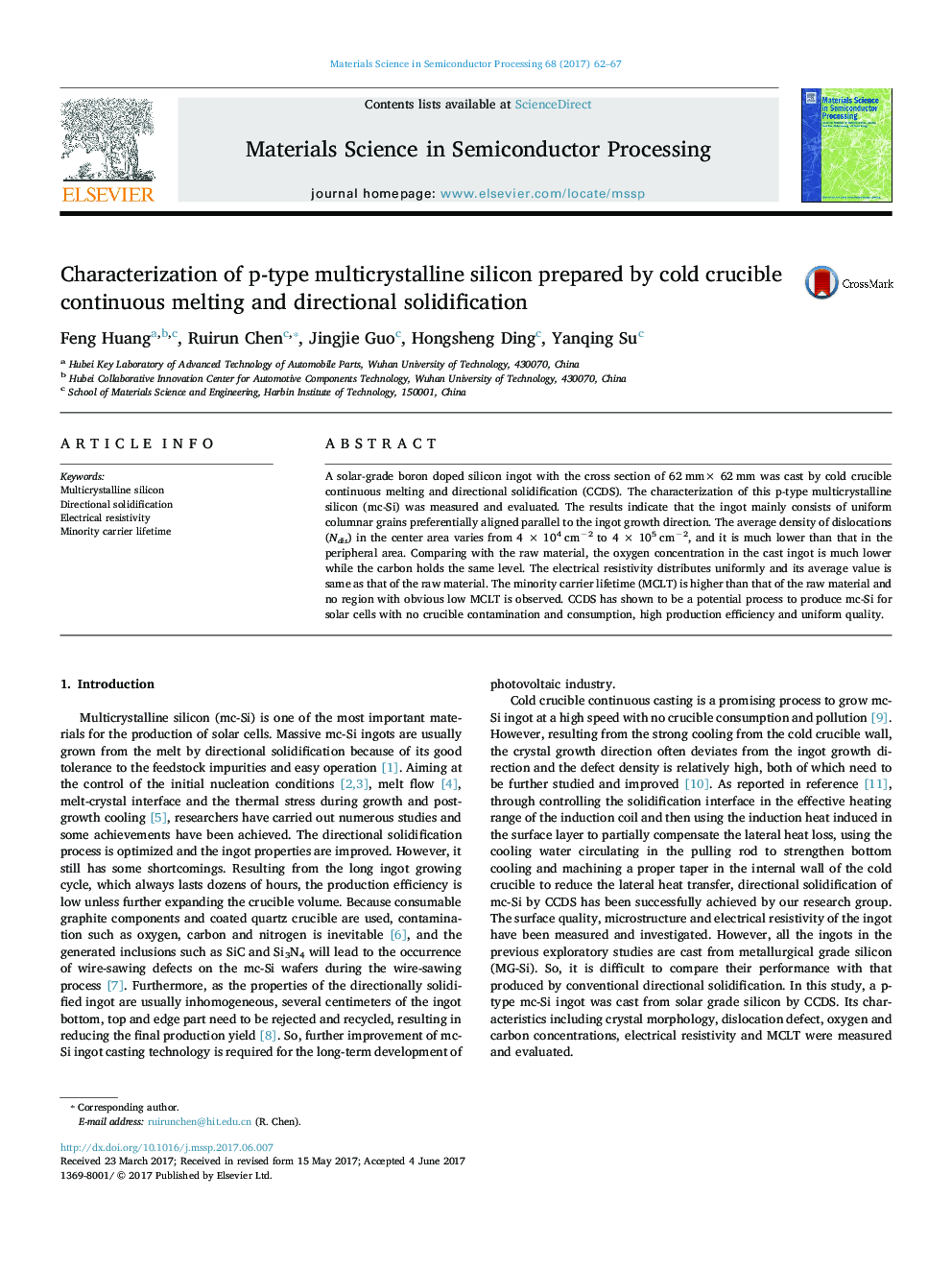| Article ID | Journal | Published Year | Pages | File Type |
|---|---|---|---|---|
| 5006014 | Materials Science in Semiconductor Processing | 2017 | 6 Pages |
Abstract
A solar-grade boron doped silicon ingot with the cross section of 62 mmà 62 mm was cast by cold crucible continuous melting and directional solidification (CCDS). The characterization of this p-type multicrystalline silicon (mc-Si) was measured and evaluated. The results indicate that the ingot mainly consists of uniform columnar grains preferentially aligned parallel to the ingot growth direction. The average density of dislocations (Ndis) in the center area varies from 4 à 104 cmâ2 to 4 à 105 cmâ2, and it is much lower than that in the peripheral area. Comparing with the raw material, the oxygen concentration in the cast ingot is much lower while the carbon holds the same level. The electrical resistivity distributes uniformly and its average value is same as that of the raw material. The minority carrier lifetime (MCLT) is higher than that of the raw material and no region with obvious low MCLT is observed. CCDS has shown to be a potential process to produce mc-Si for solar cells with no crucible contamination and consumption, high production efficiency and uniform quality.
Keywords
Related Topics
Physical Sciences and Engineering
Engineering
Electrical and Electronic Engineering
Authors
Feng Huang, Ruirun Chen, Jingjie Guo, Hongsheng Ding, Yanqing Su,
